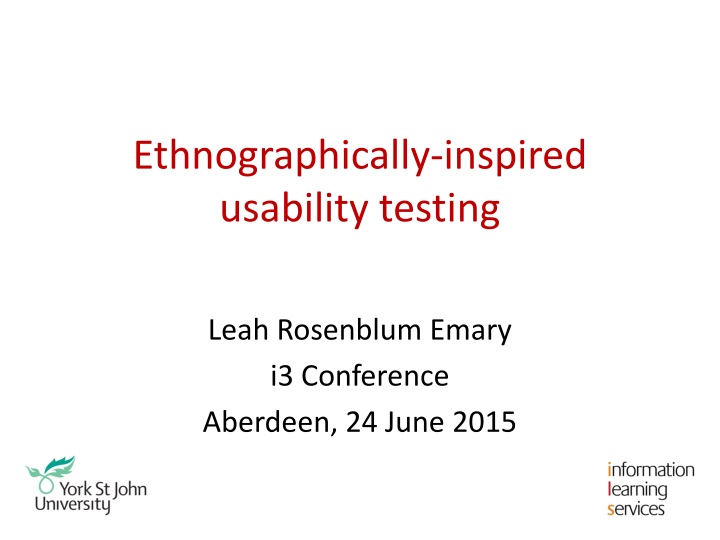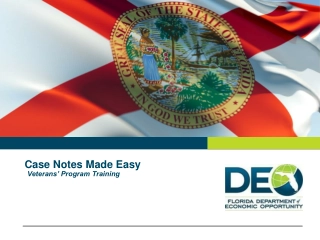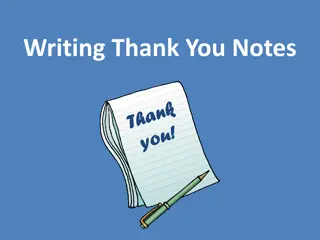
Ethnographically-inspired Usability Testing for Catalog Design Optimization
Explore the process of ethnographically-inspired usability testing for optimizing catalog design. Learn about the test design, testing day experiences, initial results, and the impact on layout, colors, links, and more.
Uploaded on | 0 Views
Download Presentation

Please find below an Image/Link to download the presentation.
The content on the website is provided AS IS for your information and personal use only. It may not be sold, licensed, or shared on other websites without obtaining consent from the author. If you encounter any issues during the download, it is possible that the publisher has removed the file from their server.
You are allowed to download the files provided on this website for personal or commercial use, subject to the condition that they are used lawfully. All files are the property of their respective owners.
The content on the website is provided AS IS for your information and personal use only. It may not be sold, licensed, or shared on other websites without obtaining consent from the author.
E N D
Presentation Transcript
Ethnographically-inspired usability testing Leah Rosenblum Emary i3 Conference Aberdeen, 24 June 2015
Goals Observe the user s first experience of the catalog Questions to ask: What do they think? What works? What doesn t work? Optimize the design and functionality before launch (August 2015)
Test design Ethnographically-inspired (Emary, forthcoming) Small sample size drawn from our team s contacts Relationship and rapport increase the richness Relaxed, discussion-based lab setting Freeform test scenarios Think aloud protocol
The test computer 1 moderator, 1 greeter, 1 technical support 12 participants thought aloud during individual time slots 3 scenarios (20-30 minutes) Video capturing gesture and affect as well as their screencast.
Testing day(s) Everyone showed up, engaged and enjoyed themselves Sweets, arts and crafts and discussion Voucher for a free hot drink from Costa Coffee Tests took place over the course of 2 weeks Reception area outside the testing room. Participants also created process maps while waiting for their test to begin.
Initial results Major and minor problems led to changes in: layout colours link prominence language advanced search Confident that users will like the look and feel of the new catalogue Comments and problems coded in NVivo
Initial results The think aloud protocol is powerful The user believing they were doing the right thing when they had actually made an error This happened consistently and pointed to a major error
Initial results Thank you for testing us properly. So many times we re asked for feedback on something in a way that s not productive. RA1
Challenges Time, time, time Qualitative data is voluminous No undergraduate participants Prioritizing what we change Managing user expectations Balancing consistency with a natural, relaxed environment
What next? Through a Jungle by andywon. https://flic.kr/p/6XrXyT Used under CC BY-NC-ND 2.0
Want to talk or reuse? Leah Emary l.emary@yorksj.ac.uk @LeahEmary LeahEmary Design document (CC BY 4.0) https://docs.google.com/document/d/1iXlVef_1klXZvYYIjp9azXx3UwuqhA 88iOankfwQ_Ck/edit?usp=sharing Planning document (CC BY 4.0) https://docs.google.com/document/d/1AooKerzP5w3JsPqgCWI27ZanTBBr w8rDNn9lRNoaOvw/edit?usp=sharing
Bibliography & reference list Asher A.D. and Miller S. (various) ERIAL Publications. Available from http://www.erialproject.org/publications/ [Accessed 19/11/2014]. Asher A.D. and Miller S. ([2011]) So You Want to do Anthropology in Your Library? Or A Practical Guide to Ethnographic Research in Academic Libraries. Available from http://www.erialproject.org/publications/toolkit/ [Accessed 11/11/2014]. Barnum C.M. (2010) Usability Testing Essentials: Ready, Set... Test!. Burlington, MA, Morgan Kaufmann (Elsevier). Bowler L., Koshman S., Oh J.S., He D., Callery B.G., Bowker G. and Cox R.J. (2011) Issues in user-centered design in LIS. Library Trends, 59 (4), pp.721-752. Delcore H.D., Mullooly J., Scroggins M., Arnold K., Franco E. and Gaspar J. (2014) The Library Study at Fresno State. Fresno, CA, Institute of Public Anthropology, California State University, Fresno. Emary L.F.R. (forthcoming) When (and when not) to use ethnography for LIS research. In: Priestner A and Borg M eds. UX in Libraries. Surrey, Ashgate. Available from http://ray.yorksj.ac.uk/id/eprint/641 [Accessed 17/06/2015]. Foster N.F. and Gibbons S. (2007) Studying Students: The Undergraduate Research Project at the University of Rochester. Chicago, Association of College and Research Libraries. Gabridge T., Gaskell M. and Stout A. (2008) Information Seeking through Students Eyes: The MIT Photo Diary Study. College & Research Libraries, 69 (6), pp.510-523. Greifeneder E. (2012) Does it Matter Where we Test? Online User Studies in Digital Libraries in Natural Environments. PhD Thesis, Institut f r Bibliotheks- und Informationswissenschaft, Humboldt Universit t zu Berlin. Seadle M. (2000) Project Ethnography: An Anthropological Approach To Assessing Digital Library Services. Library Trends, 49 (2), pp.370-85. Usability Consulting Services (2002) User Centered Design Services. Bloomington, IN, Indiana University.
Thank you Especially to Matt Tams for moderating and Charlotte Elwell for her technical expertise (and patience)






















